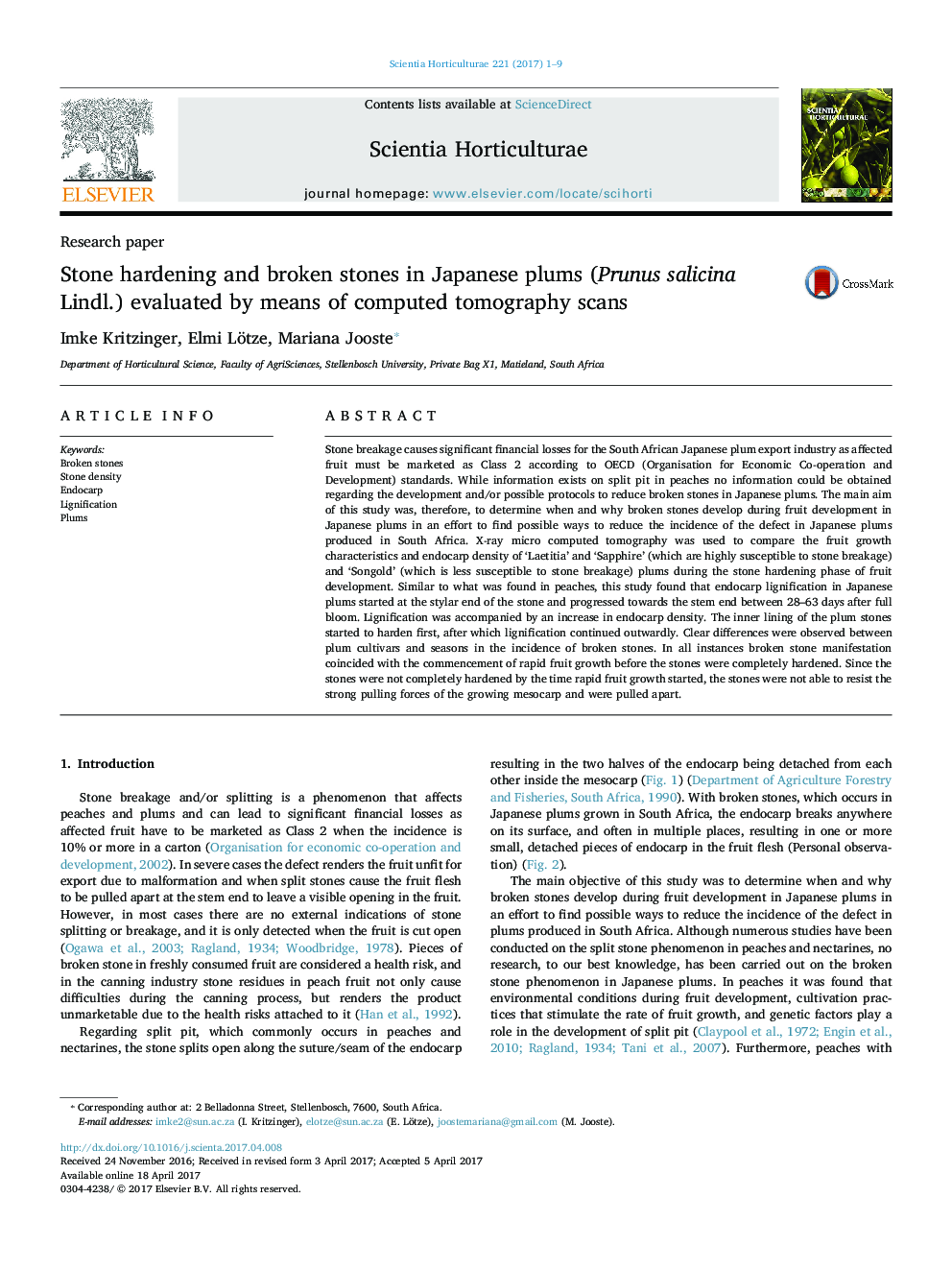| Article ID | Journal | Published Year | Pages | File Type |
|---|---|---|---|---|
| 5769640 | Scientia Horticulturae | 2017 | 9 Pages |
â¢Plum endocarp lignification advance from the stylar to the stem end of the stone.â¢Stones broke when fruit growth started before the stones were completely hardened.â¢Warm springs will cause higher levels of broken stones in susceptible cultivars.â¢Broken stone incidence will be higher after wet springs in plums.â¢Breeders must exclude cultivars with the defect in their programmes.
Stone breakage causes significant financial losses for the South African Japanese plum export industry as affected fruit must be marketed as Class 2 according to OECD (Organisation for Economic Co-operation and Development) standards. While information exists on split pit in peaches no information could be obtained regarding the development and/or possible protocols to reduce broken stones in Japanese plums. The main aim of this study was, therefore, to determine when and why broken stones develop during fruit development in Japanese plums in an effort to find possible ways to reduce the incidence of the defect in Japanese plums produced in South Africa. X-ray micro computed tomography was used to compare the fruit growth characteristics and endocarp density of 'Laetitia' and 'Sapphire' (which are highly susceptible to stone breakage) and 'Songold' (which is less susceptible to stone breakage) plums during the stone hardening phase of fruit development. Similar to what was found in peaches, this study found that endocarp lignification in Japanese plums started at the stylar end of the stone and progressed towards the stem end between 28-63Â days after full bloom. Lignification was accompanied by an increase in endocarp density. The inner lining of the plum stones started to harden first, after which lignification continued outwardly. Clear differences were observed between plum cultivars and seasons in the incidence of broken stones. In all instances broken stone manifestation coincided with the commencement of rapid fruit growth before the stones were completely hardened. Since the stones were not completely hardened by the time rapid fruit growth started, the stones were not able to resist the strong pulling forces of the growing mesocarp and were pulled apart.
